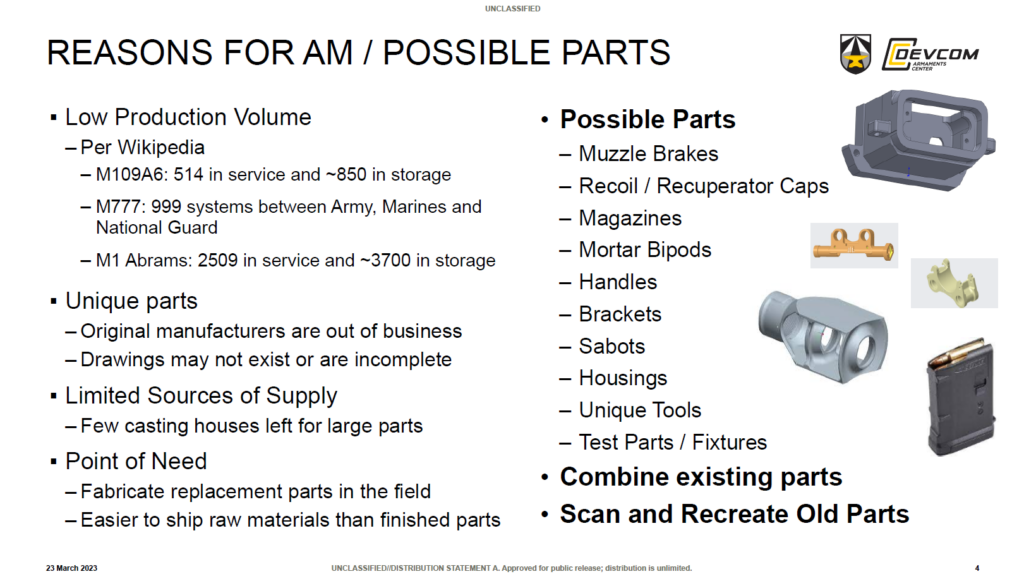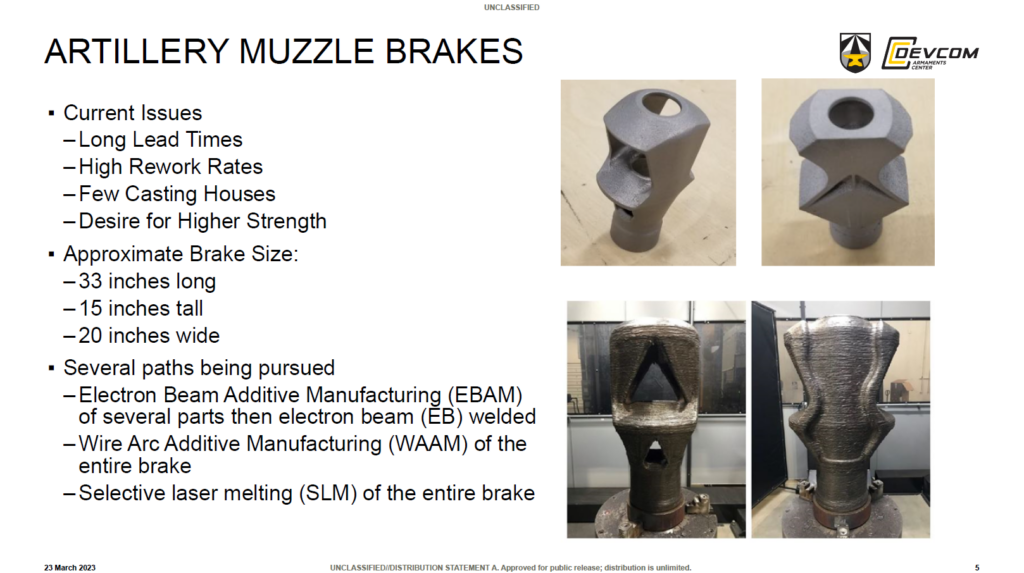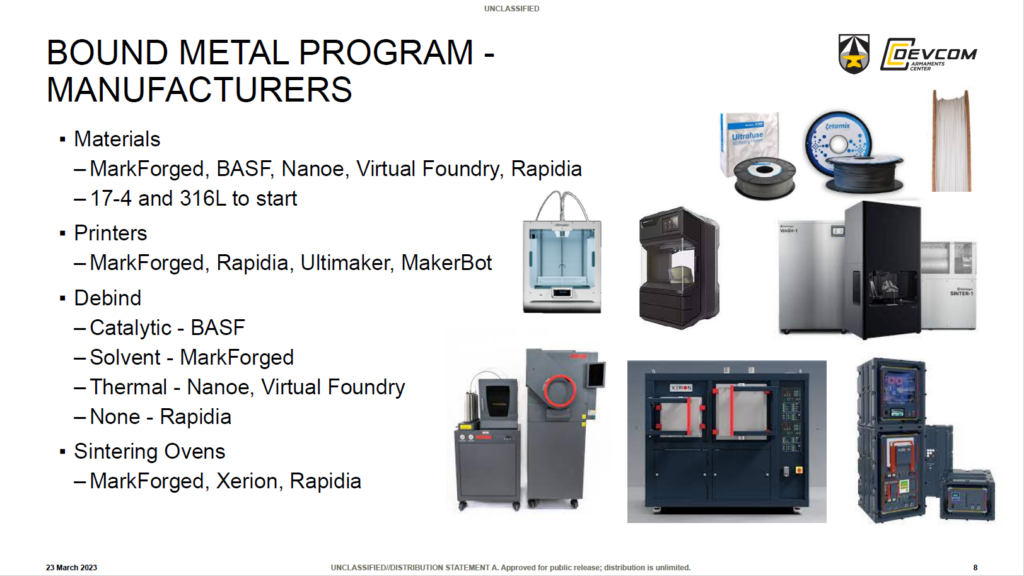A Look into US Army DEVCOM Armaments Center Additive Manufacturing Strategy
Additive Manufacturing (AM) is increasingly being adopted by militaries across the world to minimize logistic issues, bring manufacturing capabilities to the battlefield, manufacture obsolete spare parts, and unlock improved performance.

Most Additive Manufacturing professionals, both users and OEMs, meet once a year at the Additive Manufacturing Users Group (AMUG) Conference in the United States. The event is an opportunity to learn about advancements in AM in several fields, including Defense.
This year DEVCOM – Armaments Center, represented by Dr. Andrew Littlefield, offered a brief, yet fascinating overview of their current studies (at least the unclassified ones) and short-term strategy with different AM technologies.
The first part of the presentation analyzed an example of a common pain for military forces across the world: aging equipment requiring spares no longer available, spares with designs only accessible as paper drawings, in the best cases. The specific example component shown was an artillery muzzle brake, a vital part that, where missing, leaves the entire artillery system inoperable. A complex part that at 400 pounds of mass challenges the capabilities of most AM processes.
While we’ve already seen interest from the US Army in developing innovative muzzle brakes thanks to the use of advanced manufacturing, the problem here is somewhat more complex. AM, if adequately leveraged with the correct design techniques (Design for Additive Manufacturing, DfAM), can offer performance improvement, lightening and novel solutions; such as movable vanes to control gas flow, to mention an example offered during the presentation. All of this is not applicable to these massive brakes: the recoiling mass of the barrel and the gas flow redirected to counteract the recoil must match exactly the design values, therefore the replacement part must be identical to the original.

Several approaches and AM technologies were tested, all with their specific pros and cons, and the best solution is yet to be defined. The main obstacle being the difficulty in matching large size with the requirement for fine details.
Besides this important, yet dimensionally challenging case, the DEVCOM – Armaments Center focuses on a wide range of potential AM uses. From 5.56mm magazines in PPSU (a high-temperature technopolymer) to prototypes of sabots for sub-caliber projectiles, to metal replacement parts manufactured with metal filament technologies (Bound Metal).

This latter program (jointly developed with US Navy / Marines) is meant to produce, at the point of use, metal (usually steel) replacement parts for weaponry or equipment. These parts won’t require the highest level of mechanical performance and durability, yet they will need to be able to withstand low cycles of fatigue. The main value offered by the technologies investigated will be manufacturing fully functional metal parts in remote locations, with minimal to no mechanical post-processing.
The program will test 4 brands of printers and 3 sintering ovens (which must be deployable in the field) with up to 6 material manufacturers. A 2-year effort that will see the results published, the first year focuses on material properties, and the second on parts manufacturing. The parts identified as ideal test candidates are a mortar bipod, Assault Amphibious Vehicle (AAV), and Amphibious Combat Vehicle (ACV) components.
As mentioned in the introduction, the interest of Defense entities in AM is continuously increasing, as well as the technology is improving. Would you, Overt Defense readers, enjoy more coverage of this subject?

